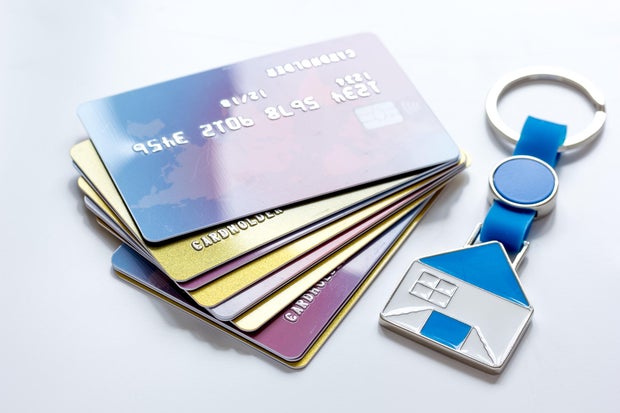 The average credit card interest rate is many times higher than the median HELOC rate is now.
Getty Images/iStockphoto
The average credit card interest rate is many times higher than the median HELOC rate is now.
Getty Images/iStockphoto
There are always a variety of borrowing opportunities available to explore. Cost-effective borrowing opportunities, however, are less plentiful.
That's been the case, in particular, over the past three years. As inflation surged, causing the prices of everyday expenses to rise, interest rates rose alongside it, in an attempt to keep inflation in check. At one point, the federal funds rate was at its highest point in 22 years. And inflation, which has since dropped significantly, was over 9%, the highest it had been in decades.
Against this backdrop, affordable borrowing options were limited. And, even now, with inflation significantly lower and multiple rate cuts issued by the Federal Reserve, there are scarce alternatives for borrowers looking to make ends meet, even if they have a good credit score.
One popular option is already in your wallet via your credit cards. Another is likely in your home via your accumulated home equity. A home equity line of credit (HELOC) can help you access that equity, which is now at a record level for many homeowners. Before getting started with either this month, however, it helps to know which is cheaper (and which is likely to become less expensive over time). Below, we'll break down what to know now.
Start by seeing how much equity you could borrow with a HELOC here.
HELOC vs. credit card: Which is cheaper this October?
When comparing the costs of select borrowing tools, there's not much to differentiate. For example, the difference in average HELOC and home equity loan rates currently is less than a half percentage point.
But that's not the case with a HELOC and a credit card.
This October, a credit card is three times more expensive than a HELOC, making the latter a clear, preferred borrowing option for homeowners right now. The average credit card interest rate is 22.25% currently, according to data from the Fed. The median HELOC rate, however, is just 7.89%, according to Bankrate. In other words, a credit card is 182% more expensive than a HELOC this month.
That said, both products have variable interest rates that are positioned to respond positively to additional interest rate cuts issued in the months ahead. But with such a disparity between the two, only a HELOC will become materially more affordable, while rate drops of a few percentage points would still keep credit card rates in the double-digit range.
Compare your current HELOC rate offers here to learn more.
Don't forget about HELOC tax benefits
A considerably lower interest rate isn't the only reason why a HELOC should be the preferred choice when compared to a credit card right now. HELOCs also come with tax benefits that credit cards do not, making concerns over today's interest rates less pressing. If the homeowner uses the line of credit for select home repair projects, they may be eligible to deduct the interest they paid on the HELOC from their taxes for the years in which it was used. In other words, not only is a HELOC much cheaper than a credit card, but the interest you do ultimately pay may qualify you for a big tax deduction next spring.
The bottom line
A HELOC is significantly cheaper than a credit card this October, and it's set to maintain that relationship in the weeks and months ahead, even as additional Fed rate cuts are issued. So, if you're in need of a sizable funding source, don't want to pay a lot in interest to secure it and intend to use it for qualifying home repairs and projects, a HELOC could be the best borrowing product for you now.
Matt Richardson is the senior managing editor for the Managing Your Money section for CBSNews.com. He writes and edits content about personal finance ranging from savings to investing to insurance.


















































